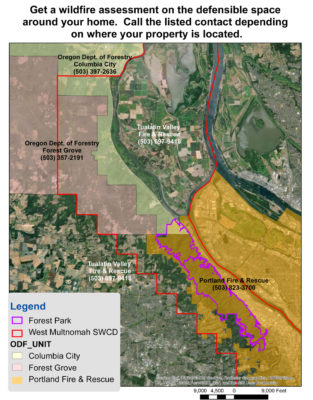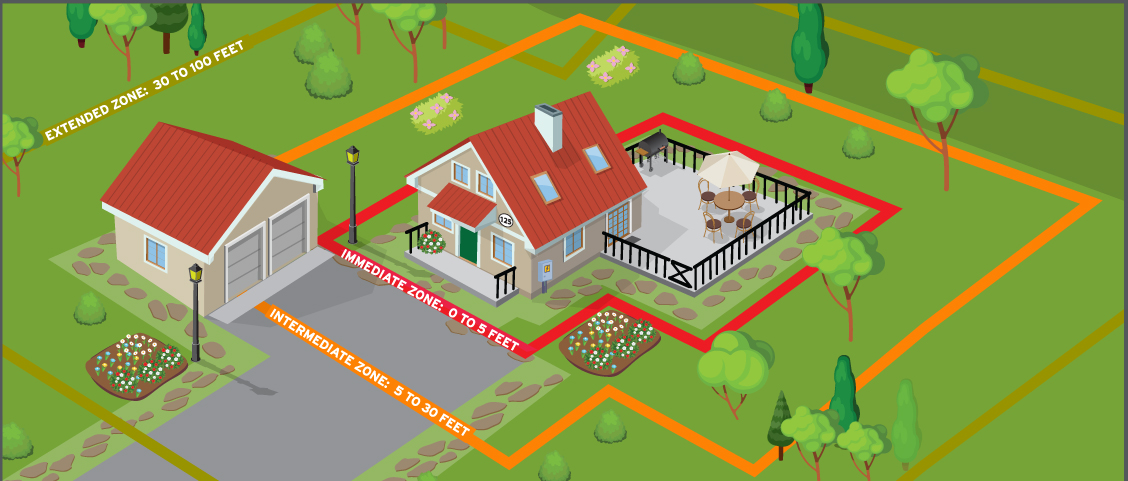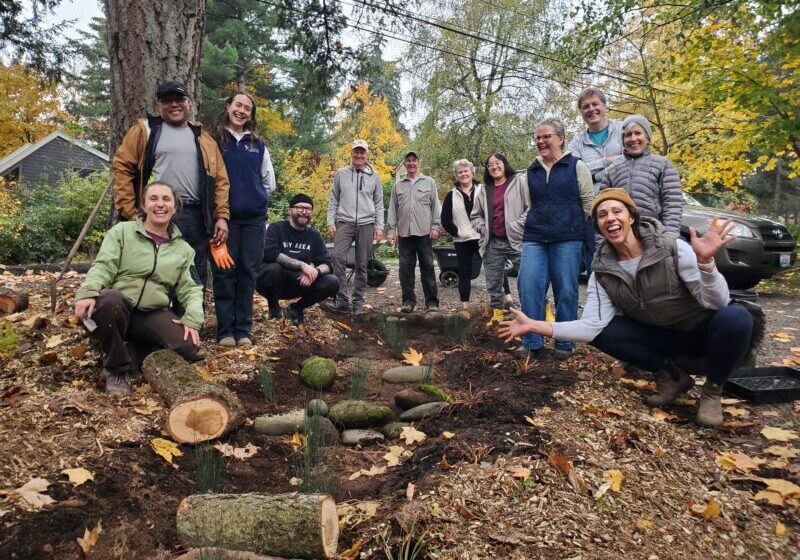Hot and dry summer weather will be here before we know it, so here are a few tips for keeping your property free from fire hazards. Practicing good vegetation management near the home is an important first step, taking care of trees and shrubs, and keeping the lawn mowed. Prune back any branches that hang over the roof, and remove dense blackberry that grows within 30 feet of the house.
Take a look at what kind of shrubs you have planted. Species like ornamental juniper can be highly flammable. When planting within 30 feet of your house, we encourage you to choose from our list of locally available, fire-resistant native plants (and more from OSU Extension) Fire resistant plants tend to be low in volatile oils and resins and they’re also known for readily shedding dead leaves and branches.
Your top priority may also be to clean gutters and sweep leaf debris away from the house. Also be sure to store firewood at least 30 feet from the house. This time of year, it’s important to be thoughtful of fine fuels building up in cracks on the roof or wood decks. Burning embers could land and ignite a fire.

The best way to find out what fireproofing steps you can take for your property is to talk to your local fire department about a home-wildfire risk assessment. Depending on where you live, Oregon Department of Forestry (Columbia City: 503-397-2636; Forest Grove: 503-357-2191), Portland Fire & Rescue (503-823-3700), or Tualatin Valley Fire and Rescue (503-697-9418) will come out to do a checklist and consultation.
Learn more about preparing for wildfire from FEMA, or Oregon State University Extension Service: Wildfire Readiness Program. Both guide residents on how to maintain three zones of defensible space around homes: the Immediate Zone: 0 to 5 feet around the house; Intermediate Zone: 5 to 30 feet; and the Extended Zone: 30 to 100 feet.



